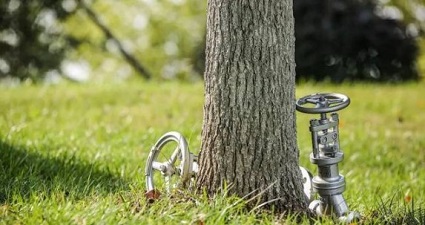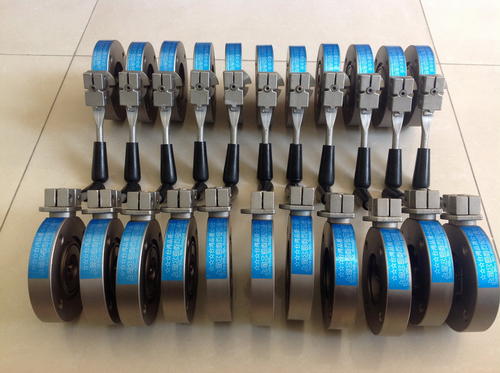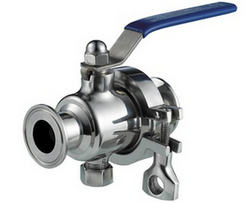What is a Sanitary Valve?

What is a Sanitary Valve?
A sanitary valve, as its name suggests, is a type of valve that meets specific health and safety standards for food, beverage, medical, and other applications. The sterile performance of sanitary valves is critical to maintaining the purity of the consumable products that flow through them. The valve body is generally constructed with stainless steel that meets high health standards. All parts that contact the fluid, gas, or slurry medium are mirror polished. The degree of polishing and cleanliness must meet the health standards specified by its industrial function. It’s mainly used in sanitary areas of food processing, pharmaceutical factories, and hospitals. It’s also used in places with high health requirements that specify zero tolerance of physical and chemical hazards.

what is a sanitary valve?
How many types of sanitary valves are there?
Sanitary valves can be built with thousands of variations, but are classified into three different types, based on their mechanical motions. The three distinct classes are linear motion, rotary motion, and quarter-turn valves.
- Linear Motion Valves utilize a closing member and move in a straight line to allow, stop, or throttle the flow of the medium. Some common examples of linear motion valves are gate, globe, diaphragm, pinch, and lift check valves.
- Rotary Motion Valves use a valve-closure member that moves across an angled or cylindrical path. A few of the most common types of rotary motion valves are butterfly, ball, plug, eccentric, and swing check valves.
- Quarter Turn Valves are basically rotary motion valves that only require roughly a quarter-turn (or 0 through 90°) stem motion to go from fully open to fully closed position or vice versa.
Of these three distinct valve types, not all are considered sanitary. Remember, sanitary valves must meet special sterile requirements, especially for the valve body and sealing components. The sealing surface of the valve seat must be non-toxic. For example, the material for hard sealing and soft sealing can be stainless steel and rubber, respectively. If we narrow the list down more, the most common types of sanitary valves are sanitary butterfly valves and sanitary ball valves. Other common sanitary valves include sanitary check valves, sanitary solenoid valves, and sanitary diaphragm valves.
What is a sanitary ball valve?
As the name says, sanitary ball valves utilize a ball with a hole drilled through the middle swivel mounted to the valve body. It operates at full flow while the hole in the ball is oriented in the same direction as the pipe. However, the hole in the ball can be rotated away from the pipe’s direction, which causes the flow rate to be restricted and ultimately cut off completely, once the hole is oriented 90 degrees perpendicular to the direction of the pipe.
Though many ball valve variations are produced by different manufacturers, almost all ball valves share the same operational features. You can find different alternatives for a ball valve by searching around the market. As a potential customer, you should take some time to get familiar with all the options out there, and compare any product benefits to the needs of your processing system. Valve manufacturers are becoming keener on the comfort and convenience of the end-user. They always try to interpret the need and tastes of their potential customers and update the quality of the product accordingly.
Are butterfly valves sanitary?
Yes. Sanitary butterfly valve designs use a single eccentric structure, and the soft seal is different from the middle section. The butterfly valve disc is installed in the pipe diameter direction. In the butterfly valve body’s cylindrical channel, a disc-shaped butterfly plate rotates around the axis with a rotation angle from 0° to about 90°, making the valve move from fully closed to fully open, and vice versa.
The body and disc of the Sanitary butterfly valve are built with high-precision CNC lathe processing. Sanitary butterfly valves are compact, lightweight, and use a simple composition with only a few components. Using a butterfly valve is simple and convenient; the disc only needs to rotate 90° to be able to open and close quickly and provide dependable fluid control characteristics. A health-grade pneumatic butterfly valve should maintain a fully open position, the disc thickness provides the medium flow through the valve body, and thus the pressure drop caused by the small valve has good flow control characteristics. The Sanitary butterfly valve has two types of seals — a ballistic seal and a metal seal. An elastic seal valve can be embedded in the valve body or attached to the disc around.
The mechanical sealing requirements for sanitary valves
Sanitary valves must be built in compliance with these mechanical sealing requirements:
- In line with GMP requirements
- Must have a surface fineness of 1.6 or above
- Must be capable of in situ cleaning and in situ disinfection of the contact surface
- Must provide a smooth flow and transition for the medium with no accumulation of materials
- There must be a structure for preventing material-fleeing outside the sealing surface.
What is the purpose of a sanitary valve?
Sanitary valves are used for the connection and control of conveyance pipes processing fluid and semi-fluid material in the food and beverage industry. Because they are made of stainless steel, they can ensure the hygienic quality of the materials during conveyance. Sanitary valves are also easy to clean and disinfect to keep the pipes clean and hygienic.
Various industrial applications have their own specifications for the material construction of sanitary valves. Most are made of stainless steel, specifically, SUS304 and 316L. The production of these two materials meets the special requirements of a variety of food and bio-pharmaceutical field.





